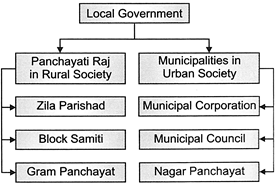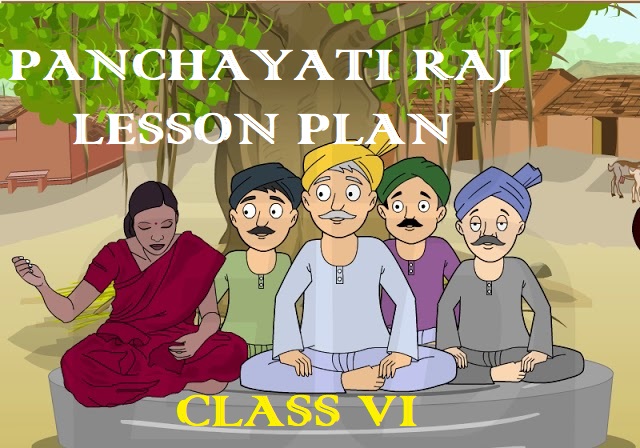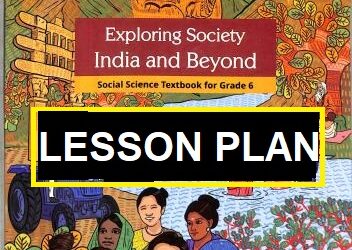Class VI Chapter 5 Panchayati Raj Lesson Plan
Welcome to the intriguing realm of grassroots governance and Indian democracy! We continue on an educational adventure through Class VI Civics Chapter 5 Panchayati Raj. This lesson plan will explore the functioning of Panchayats, their roles, and their significance in our democratic system as it pertains to rural India. Through this class vi civics chapter on Panchayati Raj, students will learn about the decentralization principles, it’s structure, and their critical function in local development and decision-making. In order to gain a better grasp of India’s dynamic democratic fabric, we will also look at democratic mechanisms that empower citizens at the local level.
Therefore, get ready to uncover the dynamics of Panchayati Raj and its impact on the lives of millions across the country.
Civics Chapter 5 Panchayati Raj Lesson Plan Class VI NCERT
Topic: Panchayati Raj
No. of Periods: 06
General Objective:
Firstly, to develop interest in the subject.
Secondly, to prepare young learners to participate in civic society.
Thirdly, encourage students to participate in public affairs.
Finally, to provide basic knowledge and understanding of the local government to the children.
Specific Objective:
Teaching the Panchayati Raj chapter to Class VI students aims to achieve several specific objectives. These objectives seek to give Class VI students a fundamental knowledge of Panchayati Raj and its significance in their lives as potential citizens of a democratic country. It can be summarized in five points.
- Understanding Local Governance
- Awareness of Democratic Values
- Civic Engagement
- Empowerment of Rural Communities
Application:
- Firstly, Students will be able to use this knowledge in real-life situations.
- Secondly, They will feel motivated to follow the rules and regulations of their country.
- Students will be better equipped to engage as active and informed citizens in their local communities
- They will have a deeper understanding of democratic principles and the functioning of local government bodies.
- with an understanding of Panchayati Raj institutions’ roles and responsibilities, students can actively contribute to local development initiatives.
Teaching aids:
Text Book, Black Board, smart board, Globe, PPT.
Checking Previous Knowledge:
Teacher: Good morning, class! Today, we’re going to explore a fascinating topic that affects our local communities and democracy in India. Let’s start with a question: Have any of you ever heard of Panchayati Raj before?
Student: I think I’ve heard the term, but I’m not sure what it means.
Teacher: That’s okay! Panchayati Raj is all about local self-governance. It’s like a small government right in our villages and towns.
Student: Why is it important?
Teacher: Great question! It’s important because it empowers us to make decisions about our own communities and helps us understand democracy better. We’ll dive deeper into it in today’s lesson.
Student: Sounds interesting!
Teacher: Yes of course! So, let’s embark on this exciting journey and learn about Panchayati Raj together.
Statement of Topic
Now, the teacher will announce the topic.
Today we are going to study about Panchayati Raj.
Teaching Method: Interactive
First, the teacher plays an interesting video on the smart board.
Technique:
To begin with, the teacher begins with an Interactive session with common examples.
However, the teacher uses various methods to make the topic interesting by interacting with the children in the class.
By asking very simple questions, the teacher draws the attention of the class.
Finally, also make sure that the children are involved in the discussion.
Therefore, While interacting with the students, the teacher also tells about what is Local Government.
Civics Chapter 5 Panchayati Raj Lesson Plan Class VI NCERT
Content/ Teaching Points:
- Introduction
- Gram Panchayat
- Three levels of Panchayat
Concept Mapping:

First Activity: Day 1
Topic: Role of Local Government
Objective of the Activity:
The objective of this classroom activity is to help students understand the various roles played by the Local Government in a village, fostering their knowledge of local governance and its significance.
Duration:
1-2 class periods.
Procedure:
Introduction (15 minutes):
The teacher will begin with a brief discussion about the concept of local government and its importance in the context of a village.
Ask students what they know about the roles and responsibilities of local government officials in a village.
Research (30 minutes):
The teacher will divide the students into small groups.
Provide each group with access to relevant resources such as textbooks, articles, or websites about local government in villages.
Also, Instructs them to research and compile information about the roles played by the Local Government in a village.
Group Discussion (20 minutes):
Each group has to discuss the roles they have discovered and prepare a list of these roles.
Presentation (20 minutes):
Each group will present their findings to the class.
The teacher encourage them to use visual aids like charts or diagrams to make their presentations more engaging.
Class Discussion (15 minutes):
After all groups have presented, the teacher initiate a class discussion.
Encourage students to ask questions and seek clarification from the presenting groups.
Role-Play (20 minutes):
For Role-play the teacher will once again divide the class into smaller groups.
Assign each group a specific scenario related to village governance.
For example, one group can act as local government officials, another as villagers with a concern, and another as the media.
Have them perform a role-play where they demonstrate how the local government addresses a village issue, showcasing the roles discussed earlier.
Reflection (10 minutes):
After the role-plays, have a brief discussion about what students learned through the activity.
Ask them to reflect on the importance of local government in a village setting.
Learning Outcome:
- Increased knowledge and understanding of the roles and responsibilities of Local Government in a village.
- Improved research and presentation skills.
- Enhanced critical thinking and problem-solving abilities.
- A deeper appreciation for the significance of local governance in community development.
Skills Developed:
- Research and information gathering.
- Communication and presentation.
- Teamwork and collaboration.
- Critical thinking and problem-solving.
- Empathy and understanding of community dynamics.
Assessment Criteria:
Students can be assessed based on the following indicators:
- Quality of Research
- Presentation
- Role-Play
- Participation
- Reflection
By conducting this activity, students will gain a holistic understanding of the roles and significance of Local Government in a village while developing a range of important skills
Civics Chapter 5 Panchayati Raj Lesson Plan Class VI NCERT
Classwork:
i) Initially, short answer type questions will be done.
ii) Later on, Long answer type questions will be discussed and done in the class.
Homework:
i) Create a visual presentation on “Empowering Panchayati Raj”
Values imparted:
- To respect differences.
- Understanding the problems faced by the Local Government.
Multidisciplinary Integrated learning:
English/Hindi: Write a letter to your CM mentioning the problems faced by sarpanch/Mukhiya.
Science: Local Solutions for Sustainable Development”
To investigate how scientific principles and practices can be integrated with Panchayati Raj to address local challenges and promote sustainable development in rural India.
Assessment Criteria:
Indicators
- Relevance of Content
- Presentation of information gathered
- Awareness of the information gathered
- Creativeness
- Analytical Skills
Learning Outcome:
After the completion of this chapter, students will be able to
Firstly, Students should grasp the fundamental concepts of the Panchayati Raj system in India
Secondly, able to describe the hierarchical structure of Panchayats, from the Gram Panchayat at the village level to Panchayat Samitis at the intermediate level and Zila Parishads at the district level.
Thirdly, comprehend the roles and responsibilities of various Panchayat levels, including their functions in rural development, administration, and service delivery.
Finally, Students should understand how Panchayat elections are conducted, the importance of democratic representation at the grassroots level, and the roles of elected representatives.
Remedial Measure:
The teacher asks the slow learners to stay after school hours for personal attention.
Civics Chapter 5 Panchayati Raj Lesson Plan Class VI NCERT
Conclusion:
For Panchayati Raj, we created a lesson plan based on Bloom’s Taxonomy in order to provide thorough learning opportunities. Students learned the principles of local governance and its importance, starting with knowledge acquisition. In terms of comprehension, they were aware of the composition, functions, and obligations of Panchayats. Through case studies, where students examined actual situations, application was promoted. We encouraged higher-order thinking by analyzing the system’s advantages and disadvantages, synthesizing ideas to address problems, and evaluating the system’s influence on rural development.
Last but not least, students participated in problem-solving by suggesting science-based solutions and displayed their learning through presentations in order to develop creativity and innovation. In order to foster critical thinking, encourage active citizenship, and give students the knowledge and abilities they need to participate successfully in local governance and rural development, this lesson plan is aligned with Bloom’s Taxonomy.
I hope the Social Science Lesson Plan of class VI will be of great help to the new teachers.
At last, I request you to comment and subscribe.
Was this lesson plan helpful to you? Write your views in the comment box.





0 Comments